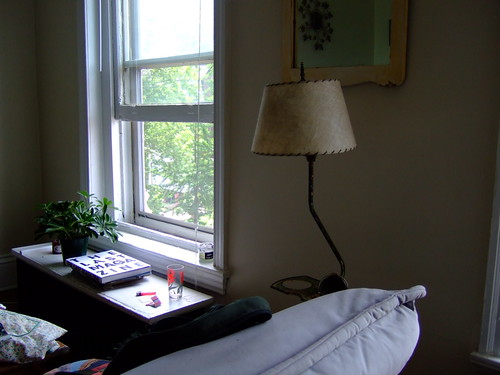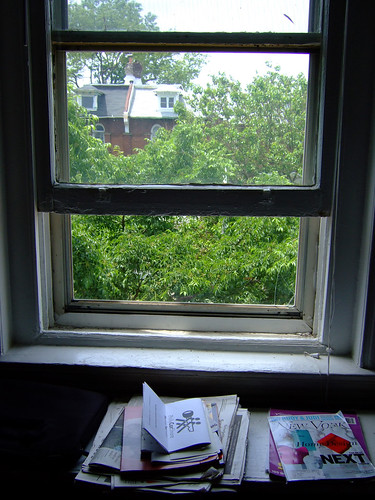In the days of records, enjoying music was a multi-faceted experience that involved the physical object – the packaging – as much as the listening part. It visualized the world of the music, or brought another element to that world. It provided us with something to hold, to look at, lyrics to read. Was this person really climbing the stairway to heaven? Or is this what it looks like on the stairway to heaven? Does this drawing have anything to do with the actual song itself? Was it symbolic in some way? Or did the band just like the way it looked?
I formed endless narratives about the worlds inside those covers while listening to the records. This includes any record cover, not just the brilliant or iconic ones: Like a Prayer is suspiciously similar to Sticky Fingers, but as a young lady I thought that the Madonna cover was perhaps what sluttiness looked like. Of course, this is the result of not just cultural conditioning but also the artfulness (in the case of Sticky Fingers) or lack thereof (in Like a Prayer) of its execution. So many album covers showed me things that the music itself didn't, and exposed me to new ideas that I wouldn't have seen any other way.

About a month ago, a music critic named Jody Rosen spoke at KGB Bar about the digitization of music, and the subsequent loss of the object or image that accompanies the music. He started obsessively collecting vintage sheet music – which he couldn’t read – for the images on the covers. He looked at the images to imagine the songs that would accompany them. I love MP3s as much as anyone else, but I definitely feel like a part of the mystery of music, how it existed in several different spheres, died with iTunes. The physicality of music packaging allows us to engage with music through more of our senses. Our own sets of visual, verbal, and musical associations combine into a comprehensive experience that creates an individualized culture of the music. We have more opportunities to connect to the music on a personal level.
My extra-masculine dad revealed his sensitive side to my siblings and me through his love of 70s-era singer-songwriters, especially Carole King. He used to repeatedly and enthusiastically play the 8-track tape of the children’s musical “Really Rosie” for us, and was so excited when the animated special came on tv. He sat us down and made us watch it. This was, of course, because Carole King wrote the music, and through this animated special he could share this love he had with us.
Consequently, I spent a lot of time as a child thinking about Carole King and what made her great enough to soften up my father. Forever burned into my mind was the cover of ‘Tapestry’. She was a woman in the city (King is from Brooklyn but she moved to LA, so this cover was actually shot at her home in Laurel Canyon), sitting on a windowseat looking out a window, maybe waiting for a guy - perhaps 'so far away' - to come home. It seems like a rainy day, and she is a little bit broken but still relatively optimistic, even cheerful. She seemed to me to be the definition of what a woman was, could be, had to be. I identified with this image, and felt that she was perhaps the woman I was destined to become.
At the same time, Carole King’s actual songs sometimes seemed disheartening. In the ‘Tapestry’ photo, she seemed like a model of strength, but in her lyrics dealing with relationships with men, the female always seemed overly weak and malleable. Some standouts include “Will You Love Me Tomorrow” and “He Hit Me (And It Felt Like a Kiss).” This lyric from “Where You Lead” always particularly bothered me, as the singer seemed to celebrate the relegation of her own dreams:
I always wanted a real home with flowers on the windowsill
But if you want to live in New York City, honey, you know I will
Regardless of my problems with Carole King, the impact of that photo and ‘Tapestry’ in general on my psyche is pretty undisputed in ways I haven’t been able to fully identify.
And so, Carole King and destiny. This is a photo of the living room of my old apartment in Philadelphia. Finally my life-long dream for a window seat was realized here, perhaps my own version of Laurel Canyon. I spent much time listening to records and smoking cigarettes out that window, looking at trees and beautiful though slightly dilapidated row houses. I would spy on the nightly goings-on and potential streetfights in front of the two Ethopian bars on opposite street corners, see bikes get stolen, try to figure out if it was garbage day. In West Philadelphia, everything was so far away, not just Center City but my regular life in New York too, and my weird fantasy had come true.





No comments:
Post a Comment